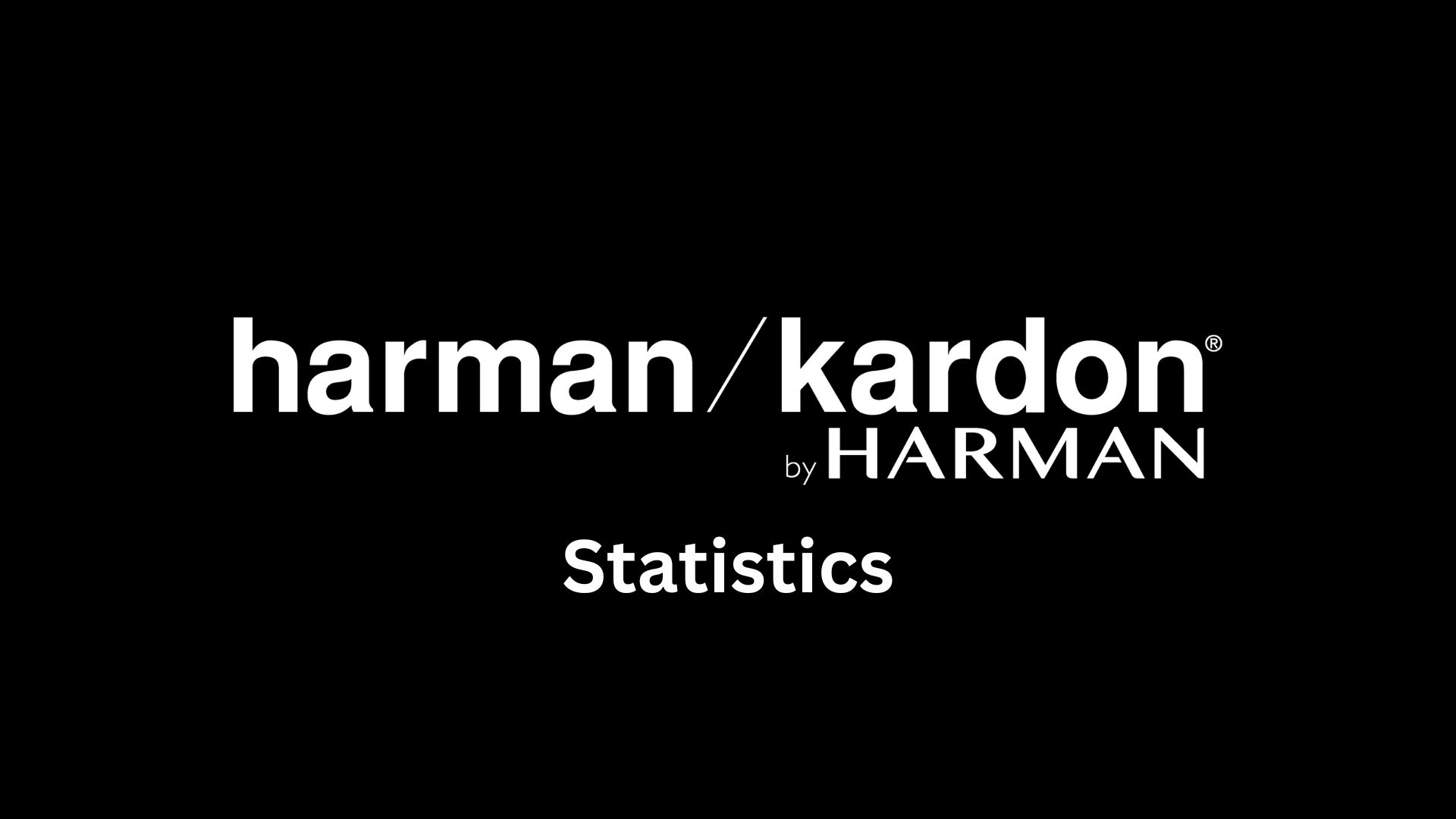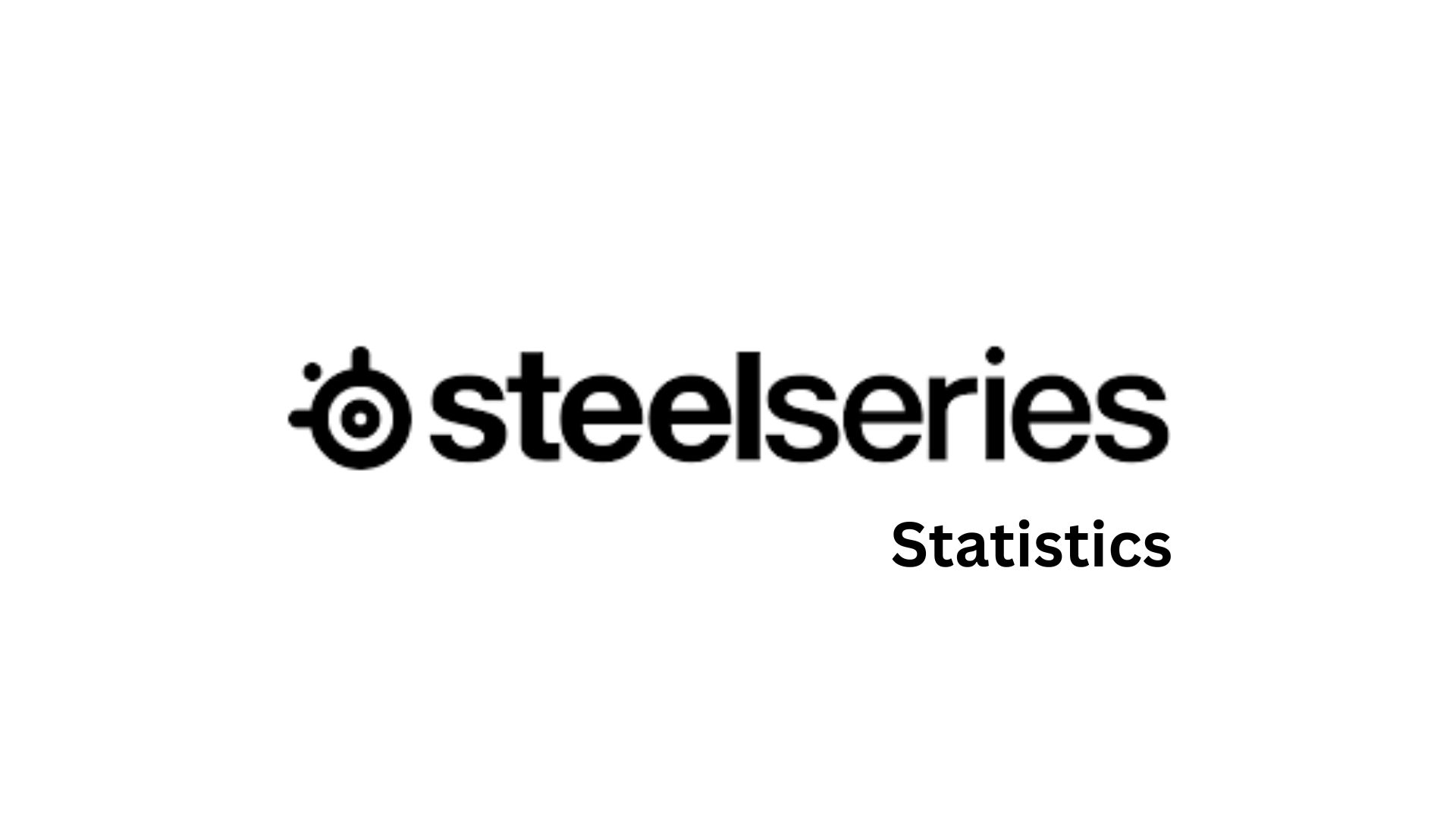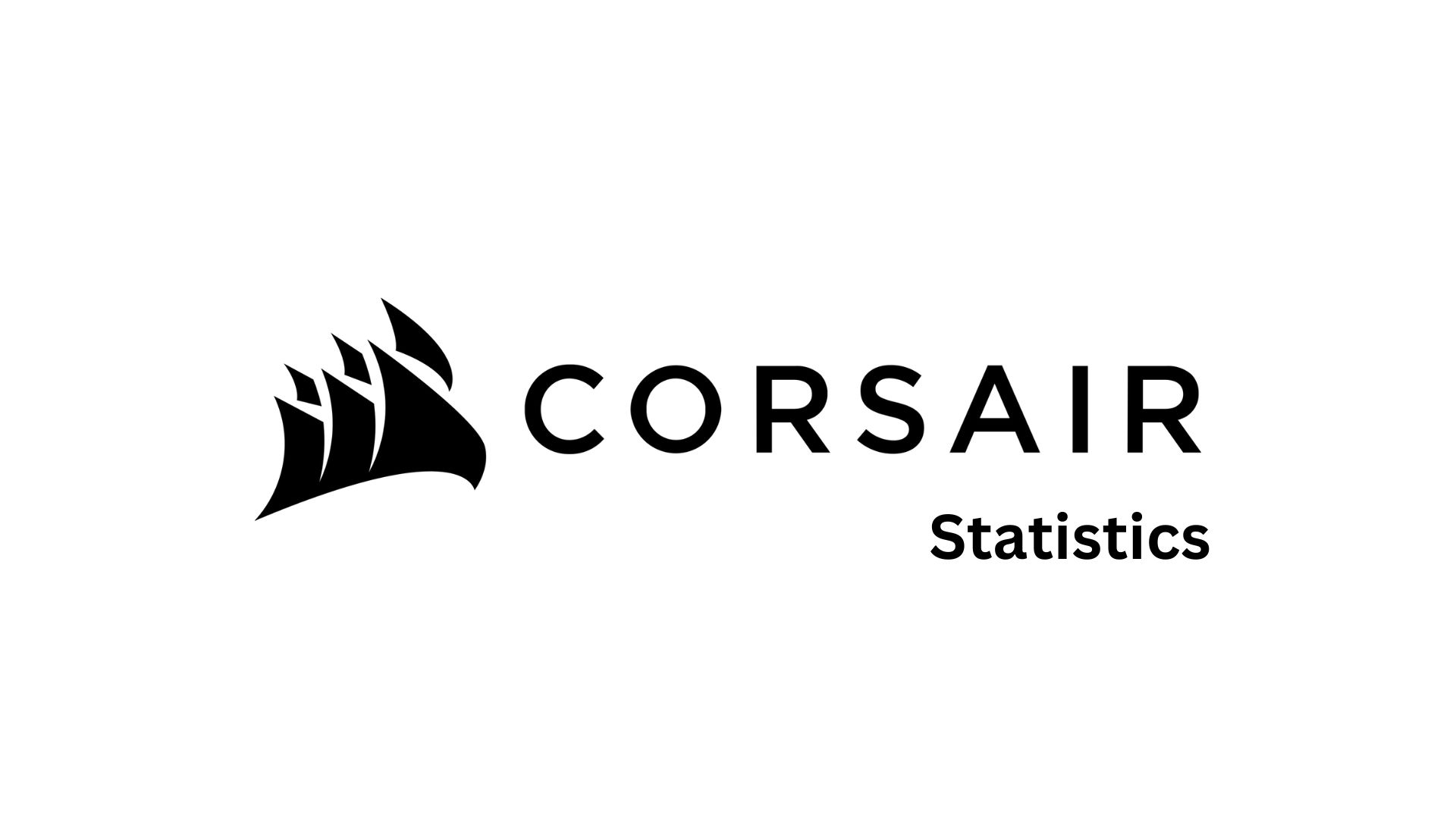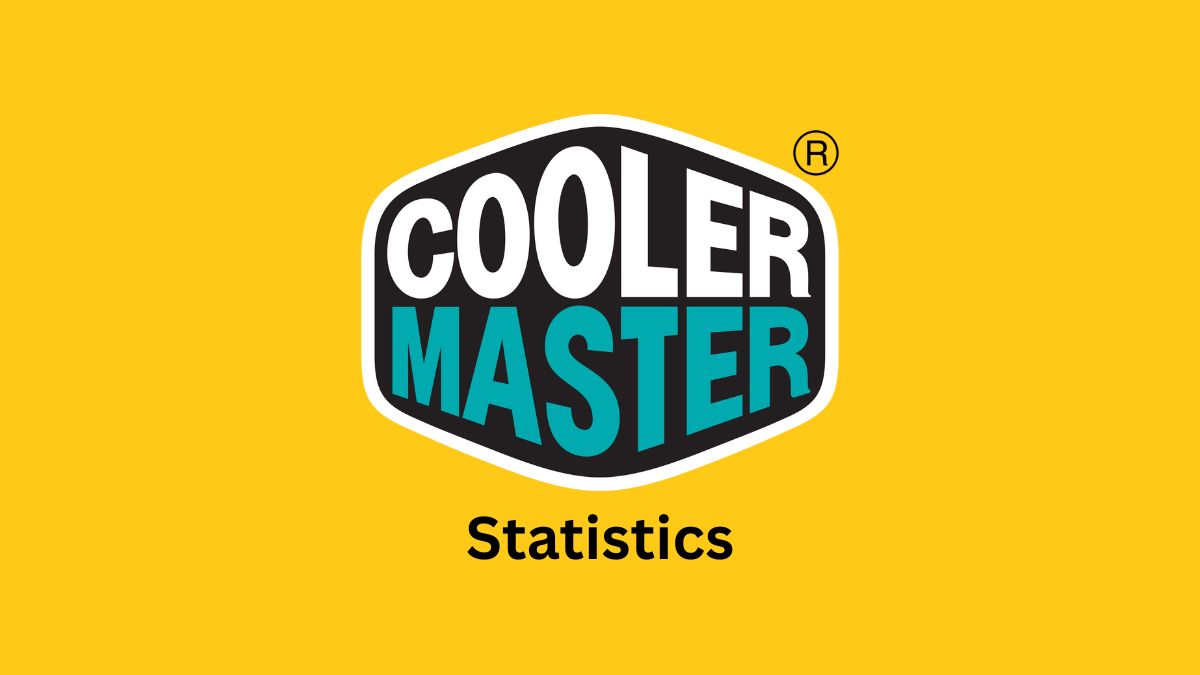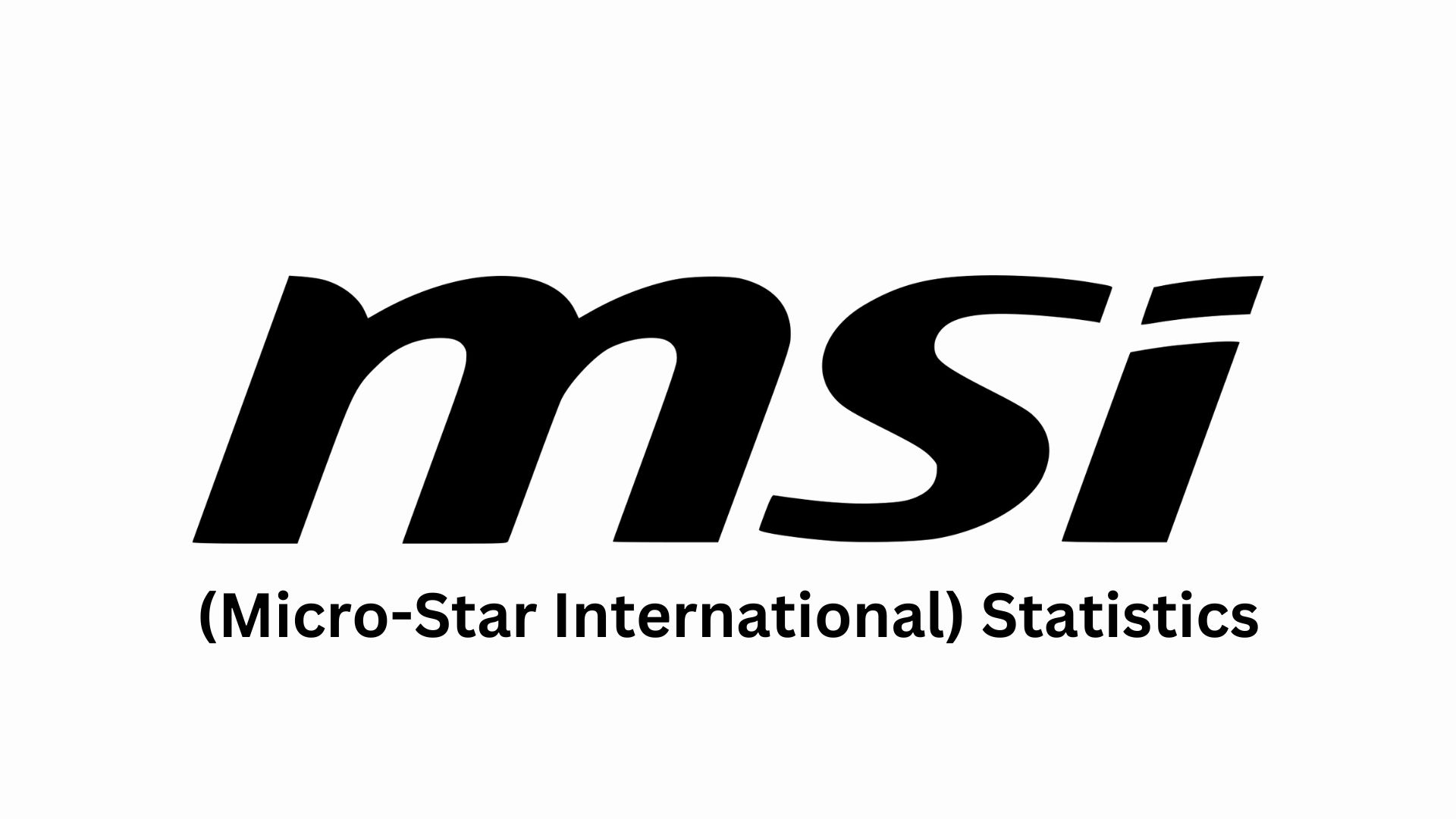Belkin Statistics By Revenue and Facts (2025)
Updated · Nov 20, 2025

Table of Contents
- Introduction
- Editor’s Choice
- History of Belkin
- Fun Facts About Belkin
- Belkin Sustainability Achievements
- Insights From Belkin Statistics
- Belkin.com Competitive Performance
- Belkin Workplace And Well-Being Achievements
- Belkin Revenue Share By Device
- Belkin’s Product Innovations
- Belkin’s Emissions Reduction And Carbon Neutrality Progress
- Conclusion
Introduction
Belkin Statistics: Belkin is a well-known company worldwide that produces a range of consumer electronics accessories, including chargers, cables, network gear, and phone mounts. In 2024, Belkin set its priorities on three major themes: product development, becoming the leader in wireless charging technology, and eco-friendliness.
These, together, depict the company’s commitment to environmentally friendly practices, tech-savviness, and trust in the brand for the long haul. Below are the key Belkin statistics summarised from 2024 to help you see at a glance how the company performed and where it stands relative to the broader market.
Editor’s Choice
- Since 2019, Belkin has cut down its use of single-use plastic packaging by 89% and has also achieved a milestone of 100% plastic-free packaging for all the new products introduced in 2024.
- In 2024, the company got a carbon-neutral status for its scope 1 and scope 2 emissions.
- Belkin has been selling 8.8 million PCR products that were made from recycled plastic and thus have been able to replace the production of virgin plastic by 432 metric tons since 2019, out of which 210 metric tons were replaced in 2024 alone.
- In 2024, the company made improvements in its products that resulted in a reduction of 1,890 metric tons of CO₂e.
- Belkin has reached the milestone of 1 billion products sold worldwide and is now the number one brand in wireless charging.
- The company is active in 171 countries, has a global retail space of 75,000 sq. ft., and owns over 700 patents.
- Belkin had a CAGR of 6% over the last 5 years, while its Mobile Power category managed to almost double its sales in the same time frame.
- Revenue from belkin.com (Sept 2025) was USD 1,317,943 from 11,225 transactions, with 1.22M sessions, AOV of US$100–US$125, and a conversion rate of 0.50–1.00%.
- Ugreen.com left Belkin far behind with a revenue of USD 22.8 million, 98,952 transactions, and a conversion rate of 4.50–5.00%.
- Belkin maintained Fitwel certification, was ranked 19th on the list of the Best Places to Work in Los Angeles, and received two Built In workplace awards.
- September marked the month when 51% of purchases made on belkin.com were through mobile devices, while 49% were through desktop.
- Different housings now incorporate as much as 90% PCR, cables consist of 50% PCR, and screen protectors are made of 60% PIR materials.
- Belkin went the extra mile with testing, thereby diminishing PFAS and PFOA risks in the products.
- Gross emissions dropped by 71%, from 9,714 metric tons in 2009 to 2,818 metric tons in 2024.
- Carbon neutrality in 2024 was completely achieved by offsetting the remaining 2,818 metric tons of emissions.
History of Belkin
- 1983: Belkin was founded by Chet Pipkin in Hawthorne, California, initially focused on making computer cables.
- 1984: Introduction of an early Apple-compatible printer cable that helped connect the Apple IIc to Centronics printers.
- 1985: U.S. manufacturing was complemented with contracted production in Asia to scale output for global demand.
- 1990s: Product portfolio expanded into surge protectors and USB-based accessories as PC adoption accelerated.
- 2002: First stereo cables and speaker wiring entered the lineup, broadening Belkin’s audio accessory range.
- 2008: The company shifted significant attention to smartphone accessories as mobile usage surged.
- 2012: Launch of the WeMo smart-home line, marking Belkin’s formal entry into connected home products.
- 2013: Belkin announced and then completed the acquisition of Cisco’s home-networking business and the Linksys brand.
- 2016: Belkin and Uponor formed Phyn, a water-intelligence joint venture, supported by a new Seattle R&D lab.
- 2018: Foxconn Interconnect Technology agreed to acquire Belkin International for approximately USD 866 million, bringing Belkin, Linksys, Wemo, and Phyn under FIT.
- 2021: Uponor sold its 50 percent stake in Phyn, reflecting changes in the JV’s ownership structure.
- 2023: Belkin marked 40 years in operation, highlighting its evolution from cables to connectivity and smart-accessory ecosystems.
- 2025: Belkin announced support will end for many older Wemo devices on January 31, 2026, with certain HomeKit-configured models continuing to function and limited refund options for in-warranty units.
Fun Facts About Belkin
- Belkin was founded in 1983 in Southern California by Chet Pipkin, who started the business in his parents’ home while he was a student and selling PC-to-printer cables to local computer shops.
- The name “Belkin” is reported to have been created by combining parts of the names of Chet Pipkin and a friend, giving the company a personal origin story rather than a technical acronym.
- Belkin’s very first hit product was a smart printer cable that allowed personal computers to connect to printers via a parallel port, which was considered a breakthrough accessory for home computing at that time.
- The company has grown from a garage operation into a global tech brand with 1,200+ employees across about 23 countries, while keeping its main office in Southern California.
- Belkin is now a subsidiary of Foxconn Interconnect Technology, which acquired Belkin (including the Linksys and Wemo brands) in 2018 in a deal valued at roughly USD 866–886 million.
- In 2013, Belkin acquired Cisco’s Home Networking Business Unit, including the famous Linksys router brand, which gave Belkin about 30% of the home router market at the time.
- Belkin has created or managed several well-known sub-brands, including Belkin (accessories), Linksys (networking), Wemo (smart home), and Phyn (water management tech), giving the group a diversified portfolio around connectivity and the connected home.
- In 2012, Belkin launched Wemo, one of the early consumer smart home ecosystems, focused on Wi-Fi smart plugs, switches, and sensors that can be controlled from a phone.
- In 2016, Belkin co-founded Phyn, a smart water management brand that uses sensors and analytics to detect leaks and optimize household water usage.
- By 2015, Belkin had crossed USD 1 billion in annual sales, underlining how a small cable maker turned into a global consumer electronics player.
Wikipedia - In March 2025, Belkin announced that it has sold more than 1 billion products worldwide and leads as the number 1 wireless charging brand, supported by double-digit growth in mobile power accessories.
- Belkin focuses strongly on accessories; in its main online store, 100% of sales are classified as electronics, with about 57% of that store’s revenue coming from the United States market.
- The company has set sustainability goals, achieving about a 37% reduction in global electricity consumption by 2018 vs its 2009 baseline, and it has announced a target of being 100% carbon neutral by 2030 across its operations.
- Belkin has a long history of community and cause-related projects, including pink ribbon iPod cases that helped raise around USD 350,000 for breast cancer research through Susan G. Komen for the Cure.
- The company has supported education through partnerships such as Da Vinci Schools in California, offering high school students internships and hands-on technology learning opportunities.
- Between 2013 and 2014, Belkin was the title sponsor of a Dutch professional cycling team, known as Belkin Pro Cycling Team, stepping in when the previous sponsor exited the sport.
- In February 2024, Belkin introduced a new division called Future Ventures, focused on products for content creation, spatial computing, artificial intelligence, and robotics, signaling the company’s push into next-generation use cases beyond traditional accessories.
- Belkin is frequently cited as one of the key global brands in consumer electronics accessories, competing alongside players like Anker and Ugreen, and is viewed as part of the core group shaping innovation in this segment.
Belkin Sustainability Achievements

(Source: belkin.com)
- Belkin’s latest sustainability results demonstrate significant strides in reducing plastic, emissions, and using friendlier materials.
- Starting in 2019, the company reduced its total single-use plastic packaging by an impressive 89%, well beyond the original target of a 25% reduction by 2025.
- It indicates that Belkin not only meets the goal but also passes it years ahead of calendar time. By 2024, all new product launches (NPI) will be packed with 100% plastic-free materials, which is a signal of a complete transition from single-use plastics in new products.
- Moreover, that was a milestone in Belkin’s efforts to reduce emissions, as the company became carbon neutral for scope 1 and scope 2 emissions, demonstrating strong progress in managing direct operational and energy-related emissions.
- Besides packaging changes, the company also switched many products to post-consumer recycled (PCR) materials, which drastically cut down on the usage of new plastic.
- Since the start of this transition, the firm has been selling 8.8 million products based on PCR, thus holding 432 metric tons of virgin plastic at bay since the 2019 baseline.
- Out of this total, the company achieved a 210 metric ton reduction in virgin plastic during 2024 alone, signalling an increasing impact each year.
- The evolution of Belkin’s methods and materials, including packaging, has also significantly reduced carbon dioxide emissions.
- Rather, if one looks closely, the company disclosed a reduction of 1,890 metric tons of CO₂e in 2024, which was directly related to the above-mentioned improvements in products and sustainability-driven decisions about materials.
- Along with this data, there were also reductions reported in specific plastic components that were characterised as using recycled PET (rPET), and in this case, the reductions were different for different packaging categories: from 32% in one case to as much as 89% in another, depending on the type of material and the product line.
Insights From Belkin Statistics
- Belkin has gone over 1 billion units sold globally, which is a clear sign of the brand’s extensive customer base and the long-standing trust it has developed with consumers.
- Furthermore, it has been awarded the title of the #1 wireless charging brand, thus confirming its position in mobile power accessories.
- Having spent over 40 years in the business, Belkin now operates in 171 countries and controls 75,000 square feet of retail shelf space worldwide, a testament to its vast distribution network.
- The online segment has experienced significant growth, especially on Amazon USA, where Belkin power banks, wall chargers, and cables have seen revenue and market share more than doubling year on year, thanks to strong demand and an improved digital profile.
- Meanwhile, innovation remains a key strength, supported by Belkin’s more than 700 patents, a manifestation of the company’s continuous commitment to research and development of new products.
- To the extent of finance and development, Belkin has continued to grow at a 6% compounded annual growth rate (CAGR) over the past 5 years.
- Furthermore, the company has not only doubled its sales of Mobile Power but also registered double-digit rate growth for global sales in all product categories that are considered major.
- Sales of the BoostCharge series, which includes products priced from US$14.99 to US$29.99, indicate strong consumer acceptance among those who can afford them.
- Established in 1983, the brand has grown from a small garage in Southern California to become a global leader in tech accessories, one of the few remaining U.S.-based companies.
- Plus, it still runs the design and engineering of products in its El Segundo, CA headquarters.
- Belkin makes its products strong and eco-friendly by conducting stringent testing, applying the highest industry standards, and using premium materials such as Post-Consumer Recycled (PCR) plastic.
- Each of these factors contributes to making a sustainable company that not only grows but also expands its global influence through the commitment to innovation and leading multiple product categories.
Belkin.com Competitive Performance
- The statistics show that belkin.com generated US$1,317,943 in sales through 11,225 transactions in September 2025, supported by a total of 1,220,954 website sessions.
- The average order value (AOV) was between US$100-125, while the conversion rate was somewhere between 0.50-1.00%, meaning just a tiny fraction of the visitors made a purchase.
- Belkin’s performance, compared to its competitors, is significantly lower.
- Ugreen.com takes the lead as the ultimate competitor, with a remarkable revenue of US$22,852,941—which is over 17 times higher than Belkin’s—along with 98,952 transactions and 2,127,142 sessions.
- Ugreen also has a much higher AOV of US$225–US$250 and a conversion rate of 4.50–5.00%, indicating stronger visitor engagement and more valuable purchases.
- Besides Ugreen, cablestogo.com and linksys.com are also beating belkin.com in terms of revenue, transactions, and AOV, thus proving they are selling more effectively in the accessories and connectivity market.
- On the other hand, zagg.com and satechi.net have metrics that are more akin to Belkin’s, thus similar in competitive tier.
Belkin Workplace And Well-Being Achievements
- The data highlighted Belkin’s pledge, through 2024, to foster a healthier, more flexible, and more stimulating workplace for its staff.
- Among international standards, Belkin holds Fitwel certification, which was initially obtained by the U.S. CDC and the General Services Administration together.
- Fitwel certification is granted to companies that devote their resources to the construction of buildings and workplaces, not only to improving parameters such as employee health, accessibility, and general well-being, but also to making their lives easier and enhancing their quality of life in terms of equity.
- Belkin has turned heads with its remarkable work environment by integrating thoughtful workplace elements such as garden areas inside and outdoors, sit-stand desks for physical activity, an on-site gym, smoking-free areas, dedicated quiet spaces, and private lactation rooms for nursing mothers and visitors.
- For the third year in a row, it was listed among the top companies in Los Angeles by the Business Journal, and its ranking was pushed up from #24 to #19 in the large company category, which includes organisations with more than 250 U.S. employees.
- This category evaluation is based on company culture, benefits, policies, employee demographics, as well as the results of an anonymous survey, which captures the actual employee experience.
- Moreover, Belkin’s worldwide HQ was granted the Built In award for the third consecutive year.
- Besides, the company got listed on two lists: 100 Best Places to Work in LA and 100 Best Midsize Places to Work in LA.
- This dual recognition of Belkin is a result of the company’s continuous investment in where the well-being of employees is considered an absolute core priority.

(Reference: gripsintelligence.com)
- Sales data for September reveal that mobiles accounted for over half of all sales on Belkin.com. Breakdown of sales shows that mobile web and app made up 51% of the total, whereas desktop users accounted for 49%.
- Thus, mobile shoppers have just a little bit of an edge over desktop shoppers when it comes to the number of purchase transactions completed.
- The trend is that more and more customers are using mobile phones to browse and purchase Belkin products, in line with the broader e-commerce trend, where mobile usage is gradually taking over.
- At the same time, the close to 50-50 distribution of sales implies that the desktop channel still holds significant importance, probably being the choice of users who want a big screen to make thorough comparisons or who just prefer a more traditional shopping experience.
Belkin’s Product Innovations
- The findings highlight that Belkin’s 2024 product eco-design focused on incorporating materials with lower environmental impact, as they recognised that up to 80% of a product’s ecological footprint is determined at the planning stage.
- To realise their sustainability targets, Belkin’s research and development (R&D) teams focused on increasing the use of recycled content in product components.
- The housings of products will have a maximum of 90% post-consumer recycled (PCR) content, the cable sheaths will be made of 50% PCR, and the manufacturing of screen protectors will be done using 60% post-industrial recycled (PIR) material.
- The use of recycled materials will not only reduce plastic waste but also lower the total carbon footprint of each product.
- Belkin also redesigned its retail packaging by reducing box sizes, which improves shipping efficiency. Smaller packaging means more units can be transported at once, lowering transportation-related emissions and reducing the carbon footprint per product.
- In addition to material changes, Belkin strengthened its safety and compliance practices by improving material testing to identify and mitigate PFAS and PFOA—chemicals widely monitored for health and environmental risks.
- Overall, these efforts show Belkin’s commitment to designing safer, more sustainable products from the very beginning of the development process.
Belkin’s Emissions Reduction And Carbon Neutrality Progress
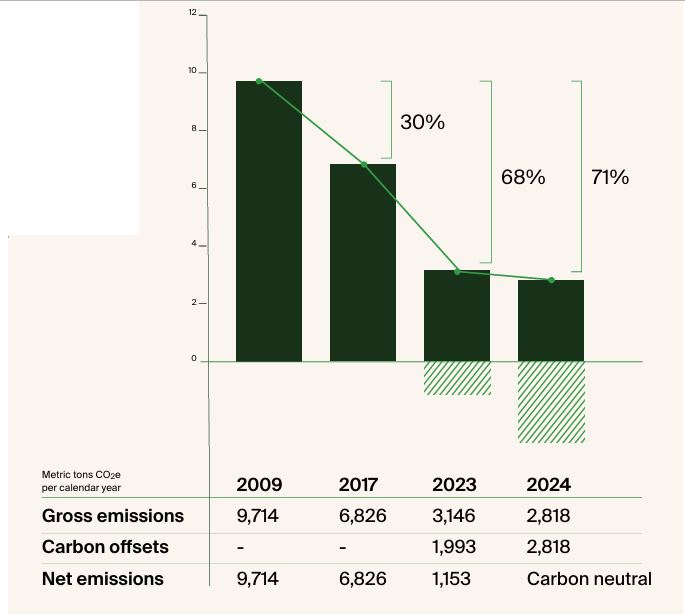
(Source: belkin.com)
- The chart displays Belkin’s gradual and steady journey toward the reduction of carbon emissions from 2009 through 2024, ultimately leading to the company’s carbon neutrality goal in 2024.
- The bar chart shows the gradual decrease in the company’s gross emissions over the years.
- In 2009, Belkin emitted 9,714 metric tons of CO₂e, which decreased significantly to 6,826 metric tons by 2017—a 30% decrease from the 2009 baseline.
- The declining trend continued with emissions reducing further to 3,146 metric tons in 2023 and marking a total of 68% reduction since 2009.
- By 2024, gross emissions further decreased to 2,818 metric tons, representing a 71% reduction over 15 years.
- In the earlier years (2009 and 2017), Belkin did not use any carbon offsets, which means that net emissions were equal to gross emissions.
- By 2023, the company had utilised 1,993 metric tons of offsets, which brought net emissions down to 1,153 metric tons.
- In 2024, Belkin offset its remaining gross emissions of 2,818 metric tons with 2,818 metric tons of carbon offsets, thus bringing the net emissions to zero.
- The primary pattern in the chart is Belkin’s consistent, considerable efforts to cut emissions at the source, and its use of carbon offsets only to neutralise the remaining possible emissions, which is a strong indication of a long-term commitment to environmental responsibility.
Conclusion
Belkin Statistics: Belkin has shown strong performance in 2024, demonstrating an ambitious company poised to be very sustainable and innovative in the future. The company’s activities, such as achieving carbon neutrality, significant reductions in single-use plastics, and increased recycling, indicate a very positive, measurable impact on the environment. At the same time, Belkin maintained its broad global presence, led the wireless charging industry, and achieved strong financial growth.
Awards for the workplace and customer-friendly digital improvements have solidified its good momentum. The competition is still quite tough, especially with brands like Ugreen, but Belkin is likely to gain a competitive edge through its continued focus on product quality, sustainability, and employee well-being in the dynamic consumer electronics market.
Sources
FAQ.
In 2024, Belkin reached carbon neutrality for scope 1 and scope 2 emissions, cut single-use plastic packaging by 89% since 2019, and used 100% plastic-free packaging for all new product launches. The company also phased out 210 metric tons of virgin plastic in 2024 alone and has replaced a total of 432 metric tons since 2019.
Belkin’s products have been sold in more than 1 billion units around the world; it has a presence in 171 countries, and it holds a total global retail shelf space of 75,000 sq. ft. Besides, it is also acknowledged as the #1 brand in wireless charging and boasts more than 700 patents, which indicates a strong global impact and innovation.
In the month of September 2025, Belkin.com brought in revenue of US$1.3 million and had a conversion rate of 0.50-1.00%, whereas Ugreen.com was the winner with US$22.8 million in revenue and a 4.50-5.00% conversion rate. Ugreen surpassed Belkin in revenue, number of transactions, AOV, and engagement metrics.
Belkin made a prominent statement in environmental sustainability by embracing 90% post-consumer recycled (PCR) plastics in housings, 50% in cable jackets, and 60% in screen protectors across the board. It also went ahead with the plan of reducing retail box sizes to enhance transportation efficiency and conducted more stringent testing to remove PFAS and PFOA safety concerns.
Belkin’s massive cutback from 9,714 metric tons gross emissions in 2009 to 2,818 in 2024 corresponds to a reduction of 71%. The company neutralised its emissions for the year by offsetting the entire remaining amount (2,818 metric tons), thus acquiring the status of carbon neutrality for 2024.

I hold an MBA in Finance and Marketing, bringing a unique blend of business acumen and creative communication skills. With experience as a content in crafting statistical and research-backed content across multiple domains, including education, technology, product reviews, and company website analytics, I specialize in producing engaging, informative, and SEO-optimized content tailored to diverse audiences. My work bridges technical accuracy with compelling storytelling, helping brands educate, inform, and connect with their target markets.

